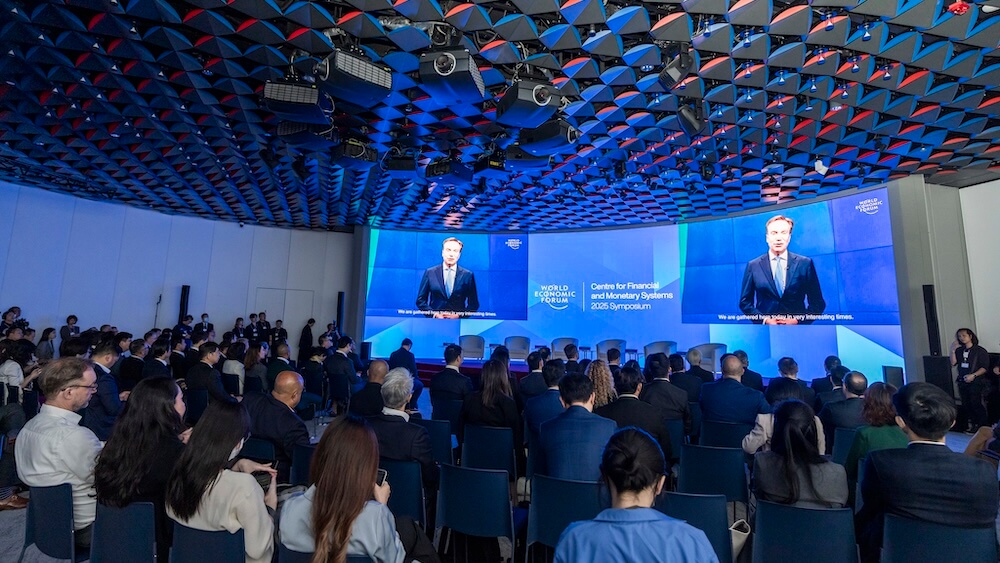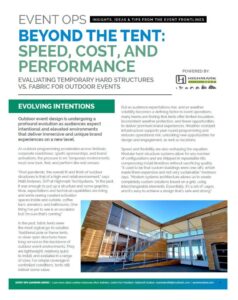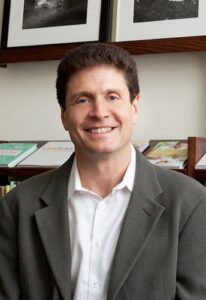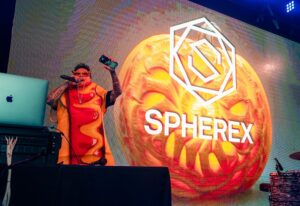



Charlotte Farmer will be sharing tangible, transferable insights from Davos — particularly around how WEF designs events to shape global narratives, inspire collaboration, and deliver measurable outcomes — at this year’s ECEF on May 28.
There are a lot of initials that come after Charlotte M. Farmer’s name. The senior vice president and COO of the independent safety science organization UL Research Institutes earned both a bachelor’s degree and Master of Science in chemical engineering, an MBA, and a Doctor of Engineering. She also has many professional achievements to her credit, including being named a Paul Harris Fellow by Rotary International (2021), and listed in Savoy Magazine’s Most Influential Black Executives in Corporate America in 2020.
Charlotte M. Farmer, senior vice president and COO, UL Research Institutes
Given her credentials, it should come as no surprise that she has been invited to attend the World Economic Forum in Davos, Switzerland, the exclusive gathering of a diverse group of global leaders from business, government, civil society, academia, and the media. In fact, she is a Davos regular, and will draw from those experiences when speaking to more than 200 leaders attending the Exhibition and Convention Executives Forum (ECEF) on May 28 in Washington, D.C.
Farmer gave Convene, via email, a sneak peek of what she will be sharing with the ECEF audience.
You’ve been attending, exhibiting at, sponsoring, and speaking at conventions for more than 25 years representing a variety of sectors and organizations. What has been a standout experience for you?
One standout experience that left a lasting impression was my first time participating in the World Economic Forum in Davos. While I’ve attended many high-level gatherings, Davos redefined what it means to convene with purpose. Every element — logistics, security, design, participant curation — was orchestrated to create an environment where transformational conversations could take place.
What made it most impactful for me wasn’t just the caliber of the attendees, but the scale and intentionality of the infrastructure behind it. The event doesn’t just occupy a venue — it transforms an entire region. The infrastructure of a complete village and the surrounding communities — from St. Moritz to Zurich — is transformed and consumed in producing the annual event.
Transportation systems are completely reoriented — from train schedules to private vehicle access — to ensure delegates can move efficiently to and from the WEF congress. Security is elevated to a global level, not just to safeguard individuals, but to promote confidence among heads of state, ministers, and world leaders. Hotels become embassies. Shops become studios. Chalets become strategy rooms.
It’s a powerful reminder that when done right, a convention becomes a catalytic platform — one that touches economies, communities, and global dialogue well beyond its physical footprint.
What will you be sharing with the ECEF audience?
I’ll be sharing tangible, transferable insights from Davos — particularly around how WEF designs events to shape global narratives, inspire collaboration, and deliver measurable outcomes. I’ll explore how security protocols, infrastructure planning, immersive experiences, and content design all work together to foster confidence, trust, and influence.
And most importantly, I’ll discuss how any event — regardless of size or sector — can borrow from that playbook to increase its relevance, elevate its participant experience, and advance its mission.
What kinds of special security precautions were taken to secure the information shared by the 2,500 global decision makers attending Davos that other event organizers can learn from?
Security at Davos is multi-layered and seamlessly integrated. It’s not just about VIPs — it’s about protecting the integrity of dialogue.
Biometric verification, tiered credentials, geofenced access, and scannable smart badges enable secure entry, while still supporting ease of movement. There’s also a culture of trust — participants know their insights are protected, allowing for more candid, solution-focused conversations.
Event organizers can learn from how Davos builds security into the user experience — it’s not a barrier, it’s a foundation for meaningful exchange.
How does Davos create intimate and exclusive moments while also fostering a sense of community?
Davos excels at intentional curation. Sessions are often invitation-only, off the record, and held in unique, unexpected spaces — like a roundtable in a mountain chalet or a quiet fireside chat in a converted café. These experiences feel exclusive, yet inclusive — you’re there because your voice matters.
At the same time, shared community rituals — like walking together in the snow between sessions or gathering for hot chocolate on the promenade — create connection. There’s a collective sense that everyone is there to contribute, not just consume. It’s a balance of access and aspiration that every event organizer should study.
Can you synthesize your takeaways for event organizers?
Organizers can draw profound insights from how the World Economic Forum designs Davos — not as a single event, but as an immersive platform for global problem-solving, leadership, and innovation. It’s a masterclass in curating convenings that are strategic, sustainable, secure, and deeply human. Key [principles] include:
- Design for depth, not just scale. At Davos, intimacy and intentionality take precedence over spectacle. The most influential ideas don’t emerge from packed auditoriums — they’re sparked in curated roundtables, working lunches, and off-the-record huddles.
- Value progress over popularity. The Forum defines its success by what happens next: Did new coalitions form? Were commitments announced? Did bold ideas move closer to implementation? It’s not about buzz —it’s about breakthrough.
- Make mission visible. The entire experience is infused with WEF’s priorities — from the food served to the session-naming conventions. The takeaway for organizers: Let your event reflect your values in every detail.
- Embed sustainability in the experience. Davos has dramatically reduced waste through the use of apps that replace printed brochures, agendas, and signage, and QR codes offer real-time access to schedules, speaker bios, and session documents. Smart device charging lockers in key zones keep people powered and present.
- Apps enable ad hoc collaboration. The official app is a backbone for multilateral meeting coordination, personalized schedules, and secure messaging — supporting spontaneous connections across disciplines and geographies.
- Collaboration and huddle space is premium. From converted cafés and media lounges to snow-covered terraces and small salons, Davos creates spaces that facilitate dialogue, foster trust, and accelerate ideation.
- Showcase the future, today. Davos is a demonstration zone for what’s next. The Global Collaboration Village, hosted in the metaverse, allows attendees to explore immersive, hybrid convening and experiment with future-facing digital diplomacy tools.
- The badge becomes the experience. Delegates’ badges serve as digital passports — controlling access, enabling cashless transactions, managing security tiers, and even collecting session analytics for post-event insight and planning.
- Delight through immersive experiences. Local vendors activate the streets with Swiss hot chocolate, lux-branded winter gear, and sensory gifts that reflect the region’s identity — a nod to cultural immersion. These moments are paired with highly anticipated, whisper-level, invitation-only gatherings for premium participants — where exclusivity elevates both desire and prestige.
- Exclusivity drives curiosity and desire. Strategic tiering of experiences creates aspiration. Limited-access events are not exclusionary — they are experiential amplifiers, designed to engage influence and spark deeper investment in the mission.
- Operational excellence is everywhere. The logistics of Davos are seamless, supported by highly visible security, clearly marked zones, and proactive pedestrian helpers who guide foot traffic, answer questions, and preserve the flow of the experience. These human touchpoints make an otherwise complex environment feel navigable and personal.
In summary, the World Economic Forum’s annual meeting in Davos isn’t just a convening — it’s a case study in how to choreograph relevance, resilience, and results. For any event organizer, it offers a scalable blueprint for designing convenings that move minds, markets, and missions forward.
Michelle Russell is editor in chief of Convene.






